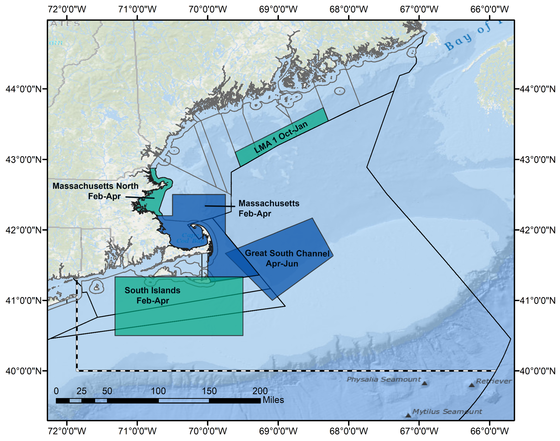Changes to Seasonal Restricted Areas Begin October 18, 2021; All Other Changes Effective May 1, 2022
The final rule to Amend the Atlantic Large Whale Take Reduction Plan to Reduce Risk of Serious Injury and Mortality to North Atlantic Right Whales Caused by Entanglement in Northeast Crab and Lobster Trap/Pot Fisheries announced on August 31 published in the Federal Register this morning.
These measures are expected to reduce the deaths and serious injuries to North Atlantic right whales due to entanglements in U.S. commercial fishing gear by about 69 percent, and will contribute to the recovery of this endangered population. The rule will also benefit other large whales, like humpbacks and fin whales, as well as sea turtles.
Some measures within the rule go into effect 30 days after today’s publication. The changes to seasonal restricted areas to allow fishing without persistent buoy lines will go into effect on October 18, 2021. In addition, there are changes to restricted areas below:
- Following changes made by Massachusetts, this rule extends the Massachusetts Restricted Area (MRA) to add state waters north to the New Hampshire border for February to April.
- Adds a new LMA 1 restricted area off Maine from October to January.
- Adds a new South Islands restricted area from February to April.
 Additional measures will go into effect on May 1, 2022, the start of the 2022 lobster/Jonah crab fishing year. These include:
- Modifying gear marking to introduce state-specific colors for gear marks and increase the number of gear marks and areas requiring marked lines.
- Modifying gear configurations to reduce the number of vertical lines by requiring more traps between buoy lines.
- Requiring weak insertions or weak rope in buoy lines.
For More Information
Find out more about the specific measures in this summary of changes and see approved weak line and inserts.
The Record of Decision and other materials are available on our Atlantic Large Whale Take Reduction Plan page.
|